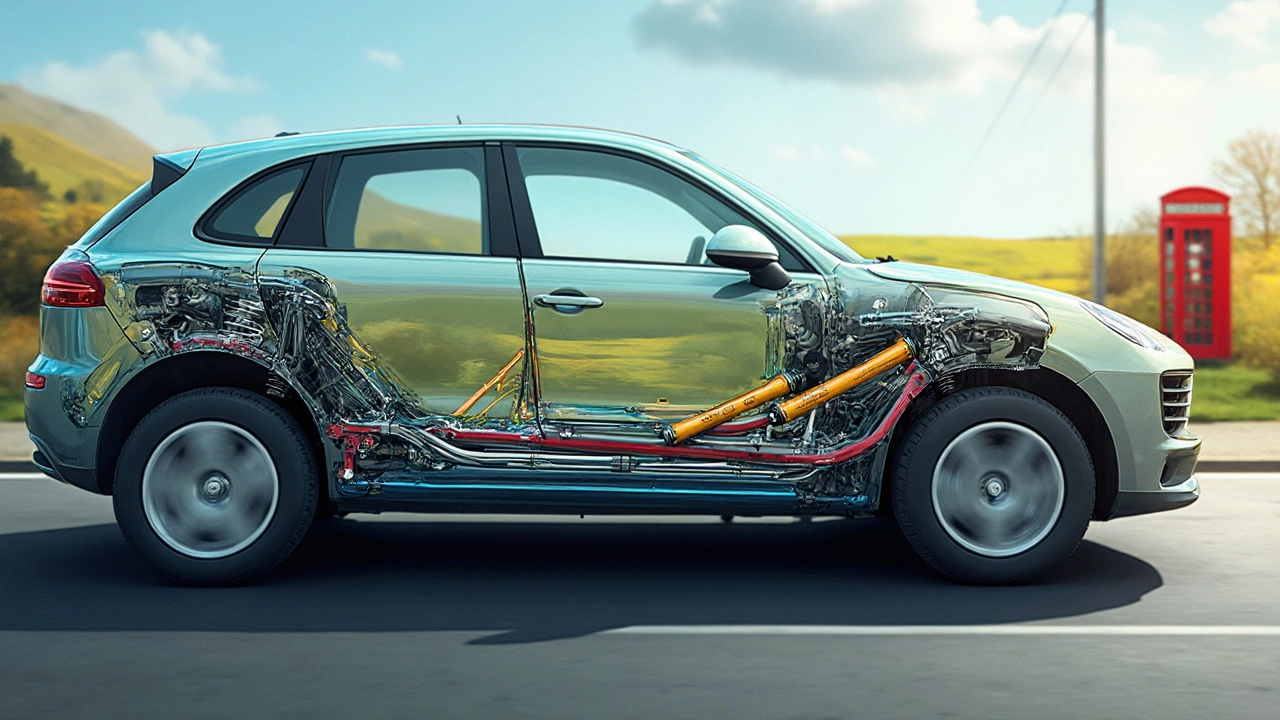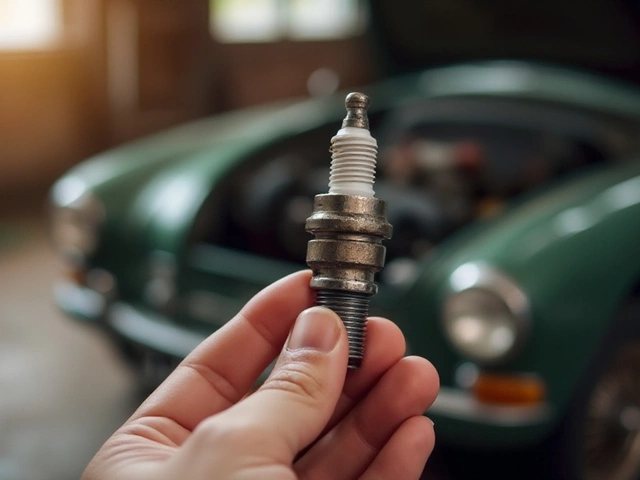Feeling those bumps a bit more than usual? Your car's suspension might be trying to tell you something. Before you panic, let's break down the basics. The suspension system isn't just one part—it's an orchestra of components working together to keep your ride smooth and steady.
Now, what symptoms should make your ears perk up? Think about things like unusual noises, uneven tire wear, or a vehicle that just doesn't feel right on the road. These hints may point to a suspension issue that needs your attention.
Diving in, shocks and struts often take the heat when things go south. They're the stars of the show, absorbing all those road imperfections we encounter daily. But they can wear out, and when they do, you might notice a lot more bouncing than you bargained for.
Yet, the plot thickens. Beyond the usual suspects, there are other characters like bushings and ball joints that also play crucial roles. If these parts are on the fritz, your vehicle might not handle like it used to. Luckily, paying attention to the right signs can lead you to the problem.
So, what can you do on your own, and when is it time to call in the pros? It's all about understanding your limits and knowing when expert hands are needed. A little knowledge can go a long way in keeping you safe and your car running smoothly.
- Identifying Symptoms of a Bad Suspension
- Common Culprits: Shocks and Struts
- Delving Deeper: Bushings, Ball Joints, and More
- DIY Tips and When to Seek Professional Help
Identifying Symptoms of a Bad Suspension
How do you know if your car's suspension parts are dragging you down? Recognizing the red flags of a bad suspension can save you a lot of headaches—and money—down the road.
Bumpy Rides
If those highway grooves feel like mountain ranges, your shocks or struts might have lost their mojo. They’re designed to absorb road impacts but when they're shot, you'll feel every nook and cranny.
Pulling to One Side
Does your vehicle feel like it has a mind of its own, drifting left or right? This could be due to a failing suspension or even uneven tire wear. It might be as simple as needing a realignment, but it’s worth checking the suspension parts too.
Unusual Noises
Clunking, knocking, or creaking sounds as you drive might seem trivial, but they can indicate suspension issues. Listen closely, especially during turns or over bumps, as these sounds could mean trouble with ball joints or bushings.
Uneven Tire Wear
Take a good look at your tires. If the tread isn’t wearing evenly, it's often a sign that your vehicle’s weight isn’t being supported properly. This can lead to deep-rooted suspension issues if not addressed.
Nose Diving or Squatting
When you brake, does the front of your car dip like it's saying hello to the asphalt? This nose dive, or the opposite reaction—squatting back when accelerating—might be whispering for new shocks or struts.
| Symptom | Possible Cause |
|---|---|
| Vibrations | Worn out shocks, unaligned wheels |
| Steering Difficulty | Faulty power steering, suspension misalignment |
Spotting these symptoms early can make all the difference. Rather than waiting for a small problem to escalate, it's wise to check your suspension parts and consult with a trusted mechanic when in doubt. A little attention now can lead to a much smoother, quieter ride!
Common Culprits: Shocks and Struts
When your car's ride feels more like a roller coaster, your shocks and struts might be the problem. These two components are essential for a smooth and controlled drive. So, what are they exactly? Shocks and struts work to absorb bumps and keep your car stable during turns and stops. Without them, even a small bump could feel like a jolt.
But, what happens when they start to go bad? Here are the tell-tale signs:
- Excessive bouncing over bumps—like riding on a pogo stick.
- Visible fluid leaks around the shock or strut.
- Uneven tire wear, signifying improper suspension alignment.
- A clunky noise when driving over bumps.
Now, here's an interesting fact: Shocks and struts don't just wear out suddenly. It's usually a gradual decline, which means you might not notice it right away. According to industry expert Mike Allen, "A well-maintained set of shocks and struts can last up to 50,000 to 100,000 miles, but harsh conditions can scrub years off that estimate."
"Regular inspections can help spot a problem before it turns into a bigger issue," says Allen.
To ensure your vehicle stays in tip-top shape, consider scheduling a routine check-up if your car falls within these mileage ranges. Ignoring these signs could lead to bigger repair bills down the road.
If you're the DIY type, here's a checklist for inspecting your suspension parts:
- Park your vehicle on a level surface and inspect the shocks and struts for leaks or damage.
- Push down hard on each corner of the car. If it bounces more than twice, it might be time for a replacement.
- Check the vehicle's stance—if it seems to sag on one side, that could indicate a failing shock or strut.
Remember, while DIY checks are useful, professional assistance from a mechanic is invaluable. They can provide a more comprehensive diagnosis and guide you on whether a replacement is necessary. Keep these tips in mind, and you’ll enjoy a smoother, more controlled ride.

Delving Deeper: Bushings, Ball Joints, and More
Beyond the main components like shocks and struts, your suspension system includes a host of small but mighty parts. Among those, bushings and ball joints play vital roles in keeping your car’s movements smooth and connected. They might be tiny, but when they fail, they can cause big headaches.
Understanding Bushings
Bushings are the rubbery parts in your suspension that dampen vibration. Imagine them as cushiony barriers for metal components. They help absorb shocks and ensure you don’t feel every pebble on the road. When bushings wear out, you might notice a rougher ride and hear clunking sounds. If you suspect worn bushings, it's wise to have a mechanic check them out before they sideline your daily drive.
The Role of Ball Joints
Ball joints are another star in the suspension show; they link your control arms to the steering knuckles. Think of them like hip joints for your car, allowing smooth rotation. When these fail, steering can get sloppy, and you might even notice uneven tire wear. If your steering feels off, it's a cue to get your ball joints looked at. Ignoring them can set you up for bigger issues down the road.
Other Small but Important Parts
Let’s not forget sway bar links and tie rods. Sway bar links help stabilize your ride during turns, and if they're compromised, you might feel a lot more body roll. On the other hand, tie rods connect your steering rack to the steering arm, translating wheel movements into motion. If you’re experiencing shaky steering or a wandering vehicle, it might be time to inspect these.
When to Seek Professional Help
While tackling minor repairs may seem doable, there’s no shame in seeking professional assistance. Suspension components often require special tools and techniques for proper handling. By visiting a pro, you can ensure everything's in tip-top shape—saving you time and preventing further damage.
| Component | Function |
|---|---|
| Bushings | Absorb shock and dampen vibrations |
| Ball Joints | Connect control arms to steering knuckles |
| Sway Bar Links | Stabilize the vehicle during turns |
| Tie Rods | Transmit steering wheel motions |
DIY Tips and When to Seek Professional Help
So, you're thinking about tackling your car's suspension parts yourself or maybe debating if it's time to hand over the reins to a pro? Making the right call can save you time, money, and a whole lot of stress.
DIY Tips: What You Can Do
Want to experiment with some DIY? Start with the easier tasks. Checking for visible wear and tear like leaking shocks is a solid start. A flashlight and a little patience go a long way in spotting obvious issues. Observe how your car handles different terrains or its tendency to drift—these are clues.
- Inspect Shock Absorbers: Look for oil leaks or excessive bounce.
- Check Tire Wear: Uneven wear can hint at suspension trouble.
- Listen for Noises: Clunks or rattles might mean worn-out parts.
Don't forget to make safety your top priority. Use jack stands and never solely rely on a car jack. Also, remember: patience is key when learning new skills!
When to Call in the Pros
If you're dealing with complex issues or lack the necessary tools, don't hesitate to contact a professional. They've got the experience and equipment, and they can spot what might not be immediately obvious. It's crucial when dealing with critical components like the control arms or ball joints, where precision matters.
"Knowing your limitations is as crucial as knowing your skillset," advises Steven Wilkins, a seasoned mechanic at AutoMax Service Center. "Sometimes it's worth investing in professional help than risking safety on the road."
Let's face it—some repair jobs are better left to the professionals because they ensure your vehicle is safe and sound for the road.
Cost Considerations
Nailing down the cost can be tricky, but consider the upfront expense of tools versus the price of a garage visit. While you might save cash doing minor fixes yourself, extensive repairs done by a pro could save you in the long run by preventing issues from turning worse.
| DIY Tools | Estimated Cost |
|---|---|
| Basic Toolkit | $50 - $100 |
| Vehicle Jack Stands | $40 - $75 |
| Workshop Manual | $20 - $35 |
Remember, the ultimate goal is a smooth ride—one where you're confident in every detail, knowing every suspension part is playing its role. If you're ever in doubt, seeking professional advice is the best step forward.






